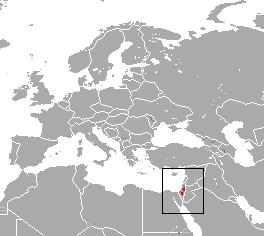Negev shrew facts for kids
Quick facts for kids Negev shrew |
|
|---|---|
| Conservation status | |
| Scientific classification | |
| Genus: |
Crocidura
|
| Species: |
ramona
|
 |
|
| Known range of the Negev shrew | |
The Negev shrew (Crocidura ramona), also known as the Ramon's shrew, is a tiny mammal. It belongs to the Soricidae family, which includes all shrews. So far, this special shrew has only been found in Israel.
It lives in three main areas: Mizpe Ramon and Sede Boqer in the Negev Desert, and Sartaber near the Judean Desert. These places are rocky desert areas. They are found at different heights, from 200 to 950 meters above sea level.
What is the Negev Shrew?
The Negev shrew is quite small. It has light gray fur on its back. Its belly is a bit lighter in color. It is a type of shrew, which means it looks a bit like a mouse but is not a rodent. Shrews are known for their long snouts and tiny eyes.
Where Does it Live?
The Negev shrew lives in dry, rocky desert areas. It is often found near dry river beds. These river beds have special plants like Retama, Tamarix, and Atriplex. These plants help the shrew find food and shelter.
Scientists think the Negev shrew might live in more places than we know right now. It could also be found in nearby Jordan. This is because Jordan has similar habitats and other shrew species that haven't been fully studied there.
Its Home and Habits
The Negev shrew is a "habitat specialist." This means it prefers to live in a very specific type of environment. It likes dry river beds with certain kinds of plants.
When scientists looked for shrews, they found the Negev shrew living alone. It was not found with other Crocidura species. The only other shrew found near it was the Suncus etruscus, which is one of the smallest mammals in the world.
From 1999 to 2006, scientists had trouble finding any Negev shrews. This might have been because of low rainfall. Less rain could mean fewer shrews. It might also make them harder to catch. They might go deeper into the soil to find moisture.
How Rare is it?
Only seven Negev shrews have ever been collected by scientists. Even though so few have been found, experts believe it might be more common than we think. It's just hard to find them!
The Negev shrew is currently listed as "Least Concern" by conservation groups. This means it is not in immediate danger of disappearing. However, more research is needed. Scientists want to know more about how many shrews there are. They also want to know if there are any new threats to them.
It's good news that five of the six known places where this shrew lives are protected areas. This helps keep their homes safe.


